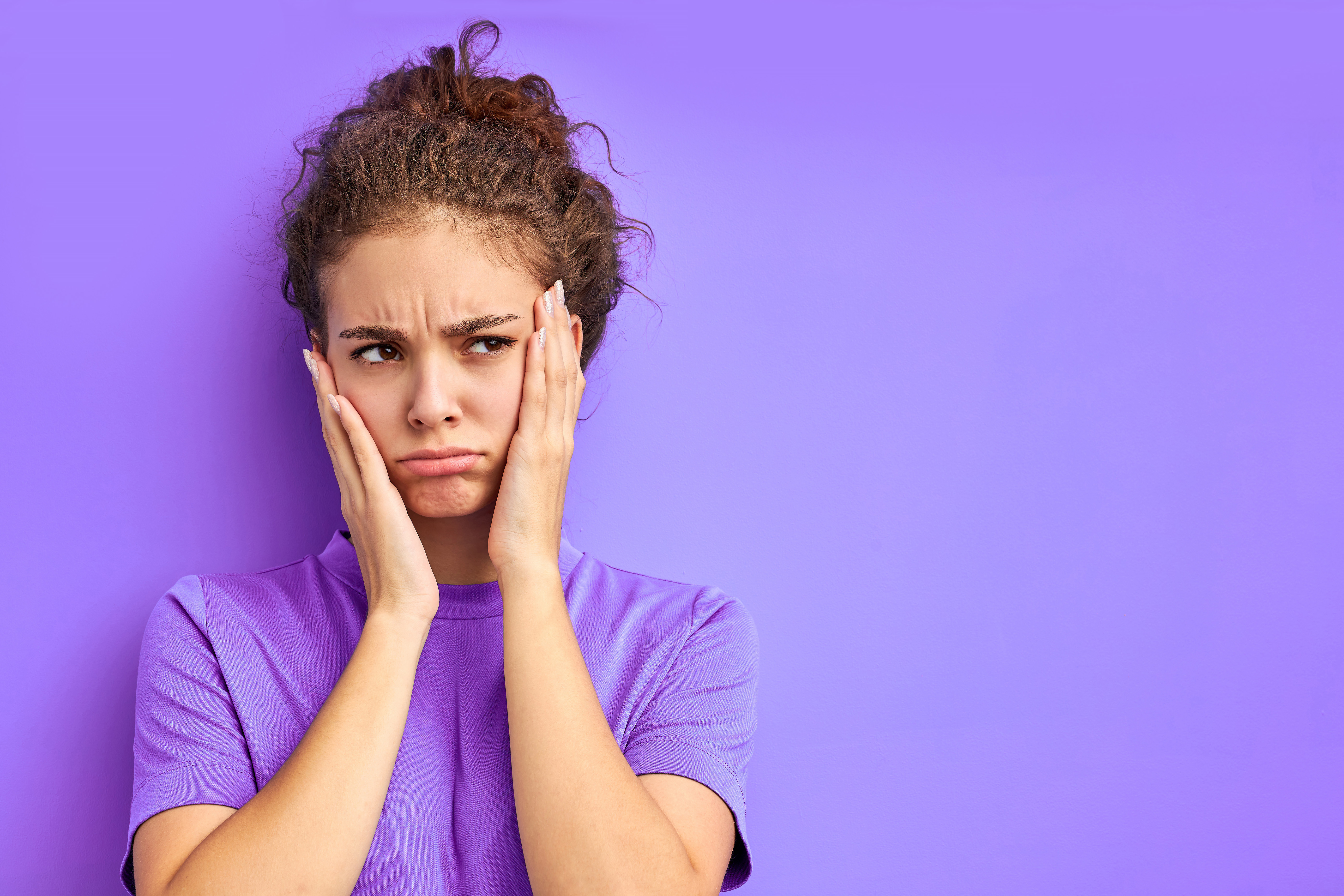What Your Most Hated Color Says About Your Personality, According to Therapists

Whether consciously or unconsciously, you more than likely find yourself attracted to certain colors over others. Color psychology, which explores how your preferred hues shape and reflect your behavior and mood, can offer some clues as to why. “Colors can be powerful in how they evoke specific emotional responses, which can tie into personality,” explains Lisa Lawless, PhD, psychotherapist and CEO of Holistic Wisdom. In fact, having a decidedly negative reaction to one color can be just as telling as your love for another. Read on to learn what your most hated color says about your personality, according to psychology experts.
READ THIS NEXT: What Your Favorite Color Says About Your Personality, According to Therapists.
Blue

Blue is an overwhelmingly popular color—so much so that when a YouGov poll surveyed citizens of 10 different nations, all 10 reported a strong preference for the hue.
“Blue is frequently associated with feelings of tranquility, stability, and reliability. This is true of various colors in nature, and blue often reminds people of the sky and bodies of water, which most people find appealing,” explains Lawless.
The psychotherapist explains that if someone strongly dislikes blue, it could indicate that they have a charismatic personality and crave excitement.
“They may find blue boring and monotonous and prefer a more dynamic color. Others may see blue as depressing or cold and be drawn to colors that offer more vibrance and warmth,” she notes.
Green

The color green is associated with health, ambition, and vitality. It tends to remind people of trees, grass, and other symbols of a thriving natural world.
Daniel Rinaldi, therapist and founder of Live Your F’N Life Coaching, says that given this association, strongly disliking the color green could suggest that things like growth, peace, and harmony are lower on your list of priorities.
“You may be someone who appreciates structured routines and dislikes unpredictability, as in the beautiful unpredictability of flora and nature’s growth,” he explains.
Lawless adds that others view the color green through a different lens. “It can symbolize negative associations such as envy or greed for some people because of the connection to money and tales highlighting green’s relationship to jealousy.”
READ THIS NEXT: The Best Colors to Attract Good Luck, According to an Astrologer.
Purple

Purple is a bold color often viewed as unique, whimsical, and creative. That’s why, if you hate the color purple, it may reflect a more practical personality type.
“People who dislike purple may show a resistance to creativity and imagination,” explains Rinaldi. “You might be someone who leans into logic rather than indulging in dream-like pursuits.”
Lawless offers another take on why the color purple may fall flat for some: “Purple is often connected to royalty, which may lead some to see it as ostentatious and vain. It is often used in religious and spiritual settings and can be negatively associated with magic, witchcraft, mourning, and death. Because it is a color rarely found in nature, it can also be associated with artificiality.”
Pink

The experts both agree that a strong dislike for pink is most likely tied to your relationship with gender.
“Pink is often associated with femininity and children,” explains Lawless. “This might be particularly true for those who ascribe to misogynistic beliefs that equate femininity with weakness or superficiality. This gendered color coding can make pink feel revolting to them.”
Rinaldi says that while a rejection of the color pink can often be a rejection of femininity itself, it can also be a rejection of the stereotypes associated with women. Lawless agrees that some people may resist pink “due to its association with binary gender norms.”
Red

Red is most often associated with passion, courage, and intensity—and for many people, that’s the color’s main appeal. However, Lawless points out that “it can also have negative associations, such as aggression and danger.”
“Traffic lights and stop signs can indicate warnings and a threat to personal safety, while blood can be associated with harm,” she explains. “For some, it can remind them of sexuality which may feel like an overly provocative color for their personal tastes.”
Due to these associations, red may feel too intense or overwhelming for those who prefer a calm and soothing environment, she says.
If you hate the color red, “you may lean towards a more calm and reserved experience, avoiding situations that require high energy or attention,” Rinaldi agrees.
For more personality advice delivered straight to your inbox, sign up for our daily newsletter.
Orange

Lawless says that orange typically symbolizes creativity, joy, and warmth. However, some people view it as an overstimulating, unsophisticated color. Others associate it with Halloween, which can evoke negative connotations, such as superstitions, fear, change, and instability.
“Someone who dislikes orange might have a preference for moderation,” says Rinaldi, adding that those who hate the color may prefer more muted aesthetics over attention-grabbing elements. “It could also indicate a dislike for spontaneity and a preference for predictability,” he adds.
Yellow

The color yellow came in low on the list of preferred shades, according to the YouGov poll. The experts explain why the colors can be especially polarizing.
“Yellow is frequently associated with joy, optimism, and energy and can be mentally stimulating,” says Lawless. “However, yellow can also be overstimulating and create a sense of anxiety for people.”
Rinaldi agrees that the color may feel overbearing to some. “If you strongly dislike yellow, it could imply a preference for seriousness and caution over optimism. You may find vibrant and bright colors overwhelming and prefer more subdued things. It might also suggest a tendency towards introspection and thoughtfulness.”